29.6.2 Provide ArchivistaBox Runtime
To create self-supporting archives, you must obtain a corresponding ISO file from Archivista GmbH. You will receive a link that refers to a zip file (archivista_run.zip). You will receive a password for the link. You can use this to create an ISO file from the zip file (archivista_run.iso). You must then upload this via ArchivistaVM. To do this, select the Home button on the ArchivistaDMS login screen.
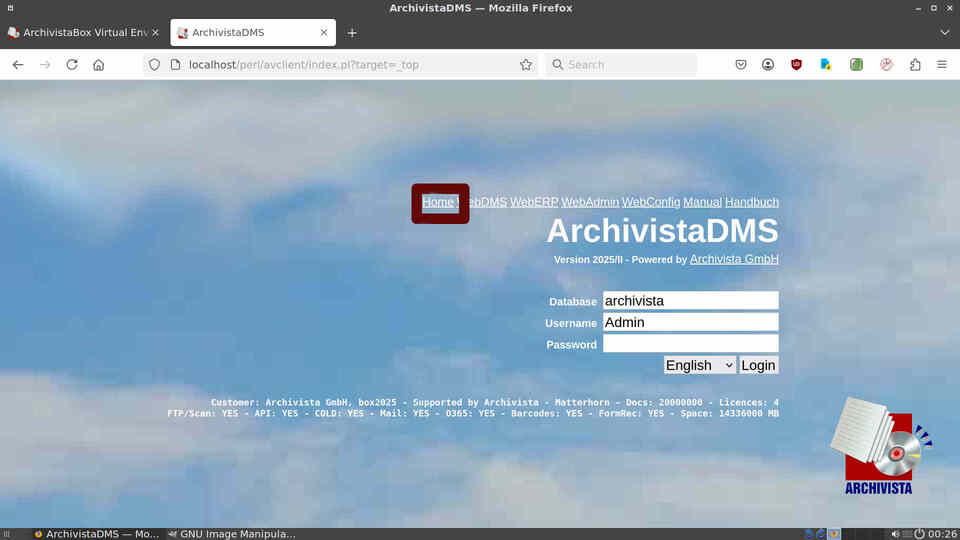
In order for the ISO file to be uploaded to the ArchivistaBox, you must log in to ArchivistaVM with 'root' and the corresponding password.
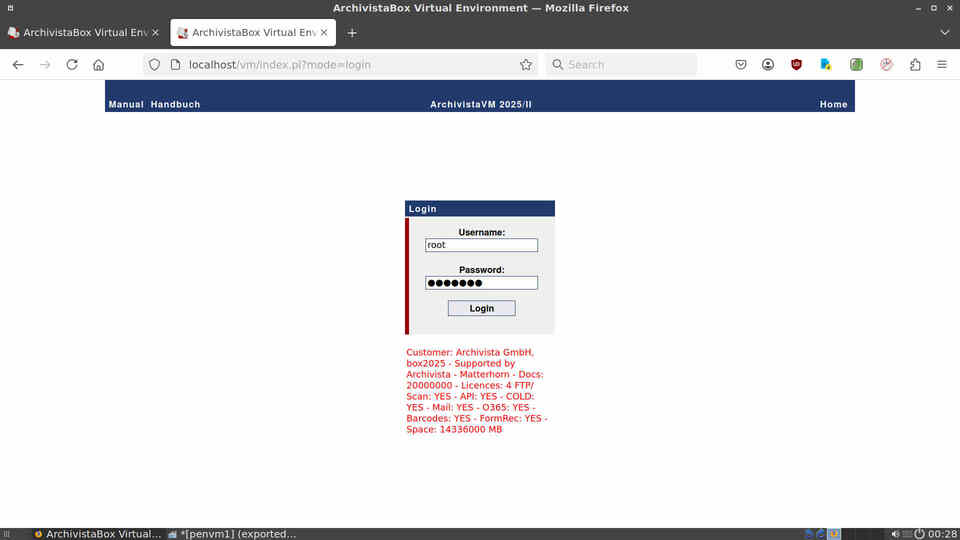
Now switch to 'Upload ISO files' and select 'Browse'. The button may be slightly different depending on the version of your browser.
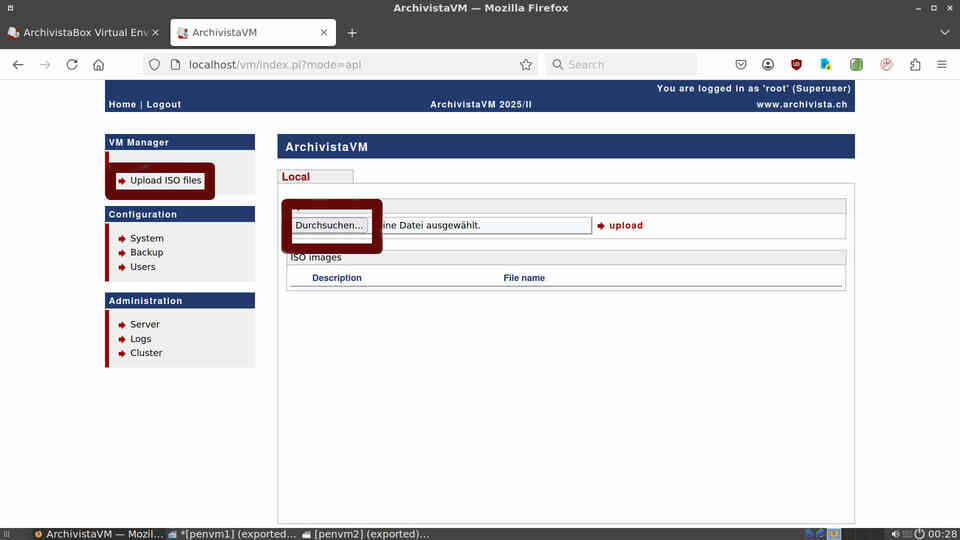
Use the dialog box to select the previously unzipped file archivista_selfrun.iso. Confirm the upload by clicking on the button at the bottom right.

You will now see that the file archivista_run.iso is marked for upload. Click on 'upload'.
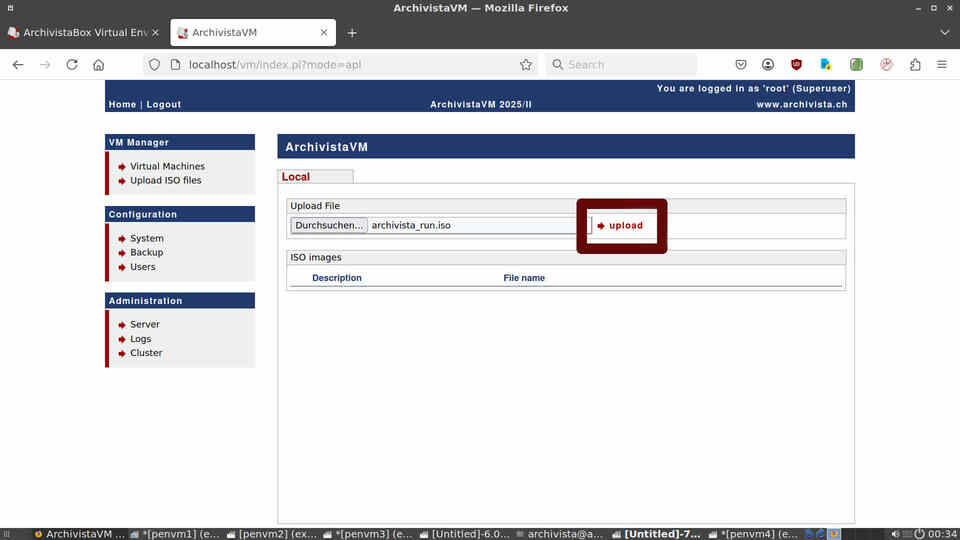
You will receive a confirmation message after the upload.
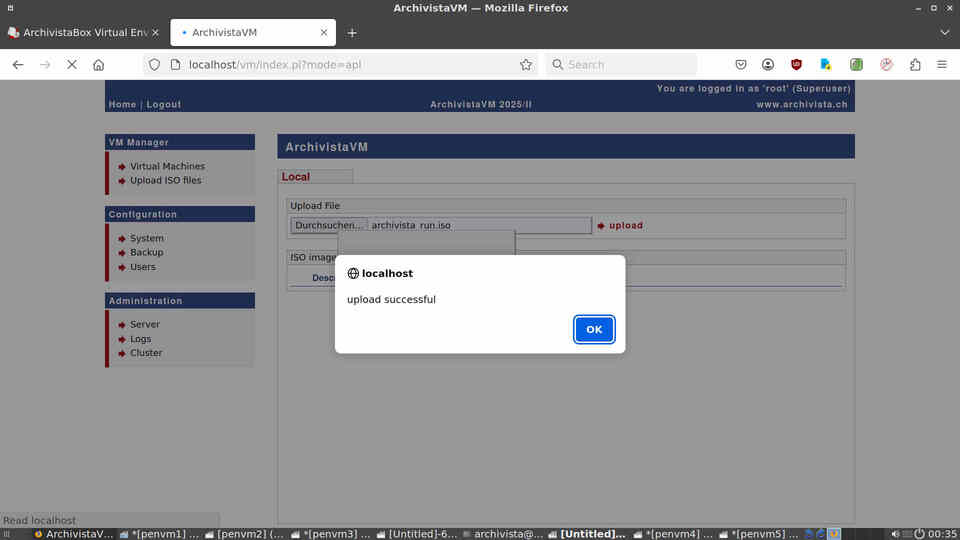
The uploaded file archivista_run.iso is now in the correct location and can be integrated accordingly by the process that is triggered in ArchvistaDMS to create self-supporting archives.
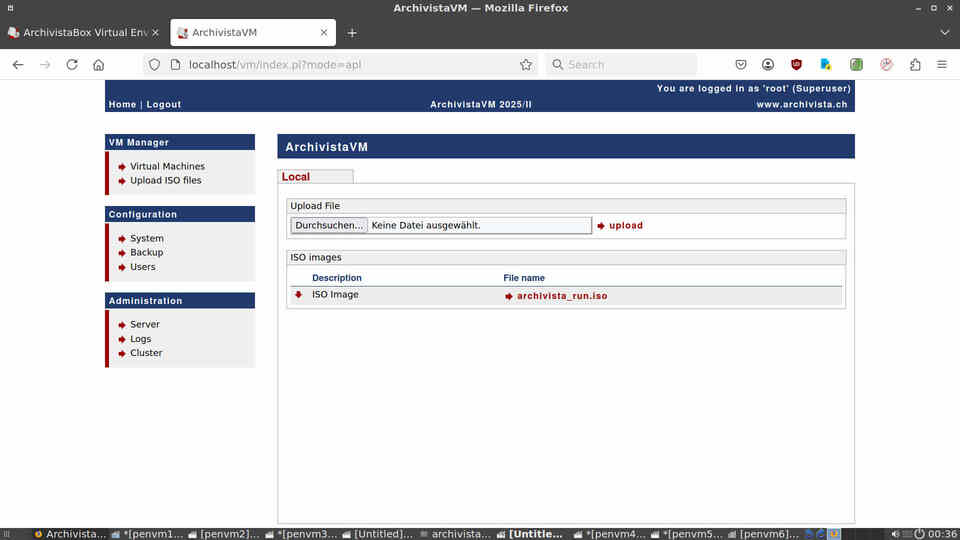
 After an ArchivistaBox update, the ISO file for the self-supporting archives should also be updated. To do this, you must delete the previously uploaded file
After an ArchivistaBox update, the ISO file for the self-supporting archives should also be updated. To do this, you must delete the previously uploaded file archivista_run.iso. This is achieved by clicking on the red arrow (pointing downwards) next to the corresponding entry. 'Delete' then appears and the file can be deleted.
